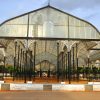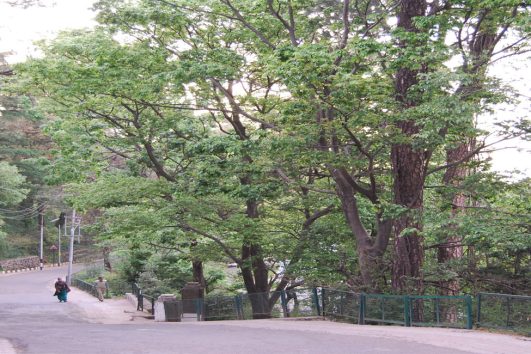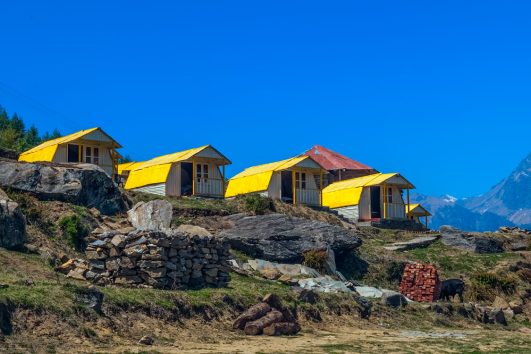Nestled in the heart of Bangalore, India, Lal Bagh is a botanical paradise spanning over 240 acres. It is more than just a garden; it is a cherished sanctuary of lush greenery, vibrant blossoms, and rich history.
Historical Significance: Lal Bagh, which translates to “Red Garden” in English, derives its name from the profusion of red roses that once adorned its landscape. This historical gem dates back to the 18th century during the reign of Hyder Ali and his son Tipu Sultan. Initially conceived as a private garden, it was later expanded and transformed into a public botanical garden by the British in the 19th century.
Size and Layout: The sprawling Lal Bagh is a testament to meticulous planning and landscape design. It’s divided into several sections, each with its unique features, making it an enchanting experience for visitors of all ages.
History of Lal Bagh
Origin and Creation: The origins of Lal Bagh can be traced back to 1760 when Hyder Ali commissioned the garden. The British took control of the garden in 1791 after Tipu Sultan’s defeat. It was John Cameron, the then Superintendent of the Garden, who played a pivotal role in its transformation into a horticultural wonder.
Notable Contributors: Over the years, Lal Bagh has seen the efforts of many horticulturists, botanists, and landscape architects who have added to its beauty and diversity.
Evolution Over Time: Lal Bagh has evolved from a simple Mughal-style garden to a world-renowned botanical garden. It has retained its historical charm while incorporating modern amenities and conservation efforts.
Architectural and Natural Features
Rock Formations: One of the unique features of Lal Bagh is its stunning rock formations, particularly the giant monolithic rock that’s over 3,000 million years old. This geological marvel is a favorite spot for visitors.
Glasshouse: Modeled after London’s Crystal Palace, the Lal Bagh Glasshouse is a magnificent structure. It hosts biannual flower shows and is home to rare and exotic plants from around the world.
Floral Clock: The floral clock, a meticulous creation of vibrant blossoms, is a visual treat. It’s a marvel of precision and aesthetics.
Rare Plant Species: Lal Bagh is home to a diverse collection of plant species, including some that are endangered. The garden plays a significant role in plant conservation efforts.
Water Bodies and Fountains: The garden features serene water bodies and fountains, creating a tranquil atmosphere that’s perfect for leisurely strolls.
Plant Collections
Different Sections: Lal Bagh boasts specialized sections like the Rose Garden, Bonsai Garden, and Medicinal Plants section, each offering a unique botanical experience.
Highlights of Plant Species: From the majestic silk cotton tree to the delicate orchids, Lal Bagh showcases a wide array of plant species from across the globe.
Conservation Efforts: Lal Bagh actively participates in plant conservation programs, working to protect endangered species and educate visitors about the importance of biodiversity.
Recreational and Educational Activities
Walking and Jogging Trails: The garden offers picturesque walking and jogging trails, making it a favorite spot for fitness enthusiasts.
Birdwatching Opportunities: Lal Bagh is a haven for birdwatchers, with numerous bird species gracing its trees and water bodies.
Educational Programs and Workshops: The garden hosts educational programs, workshops, and nature camps for students and enthusiasts to learn about botany and ecology.
Events and Festivals
Flower Shows: Lal Bagh hosts biannual flower shows in January and August, attracting visitors from far and wide to witness breathtaking floral displays.
Cultural Events: The garden serves as a cultural hub, hosting music and dance performances, adding a vibrant touch to its serene surroundings.
Photography Exhibitions: Photographers find endless inspiration amidst the natural beauty of Lal Bagh, and the garden occasionally hosts photography exhibitions.
Significance and Impact
Contribution to Biodiversity Conservation: Lal Bagh plays a pivotal role in the preservation of plant species, particularly those threatened by extinction.
Promoting Environmental Awareness: The garden educates visitors about the importance of biodiversity, sustainable practices, and environmental conservation.
Tourist Attraction and Economic Impact: Lal Bagh draws tourists from across the globe, contributing significantly to Bangalore’s tourism industry and local economy.
Visitor Information
Opening Hours: Lal Bagh is open to visitors every day of the week, usually from early morning to late evening.
Entry Fees: There is a nominal entry fee for visitors, with additional charges for the flower shows and certain events.
Accessibility and Transportation: The garden is easily accessible by public transport, and ample parking is available for those with private vehicles.
Preservation and Future Plans
Conservation Efforts: Lal Bagh continues to focus on plant conservation, habitat preservation, and sustainable horticultural practices.
Future Developments and Expansions: The garden has plans for further expansion and modernization while preserving its historical essence.







Tour Reviews
There are no reviews yet.
Leave a Review